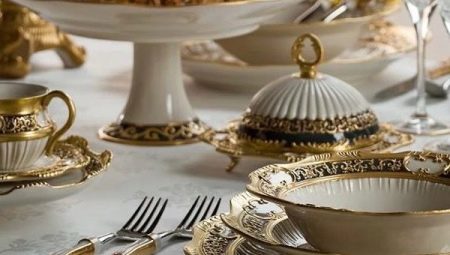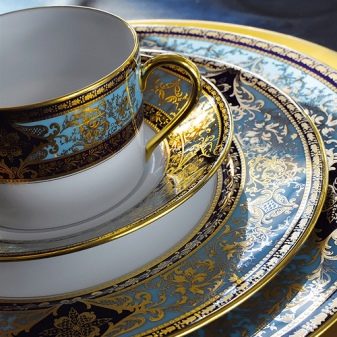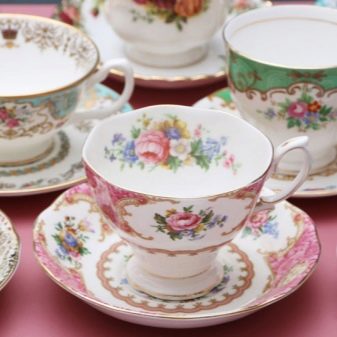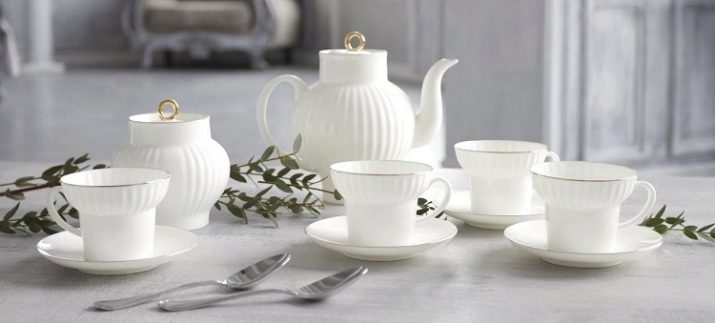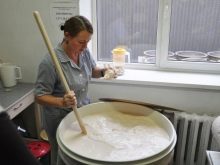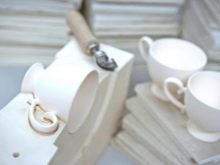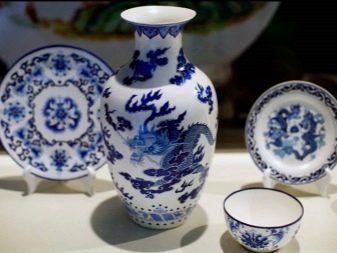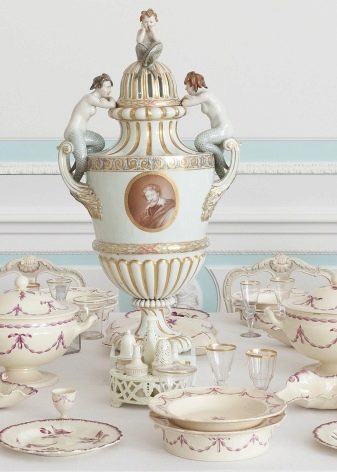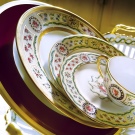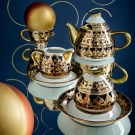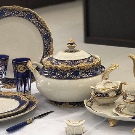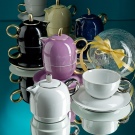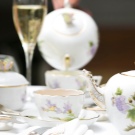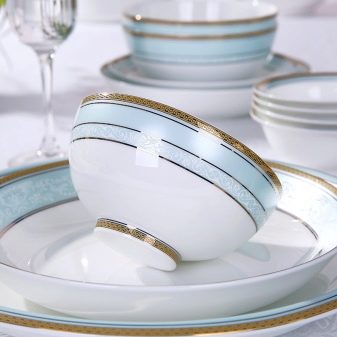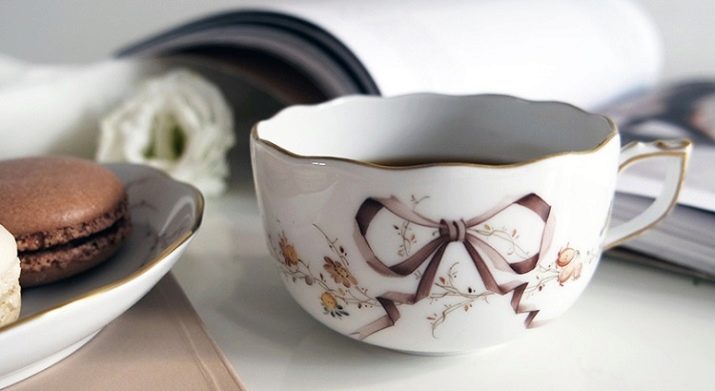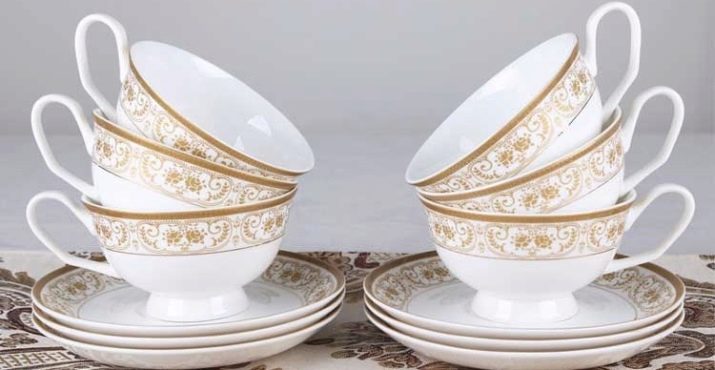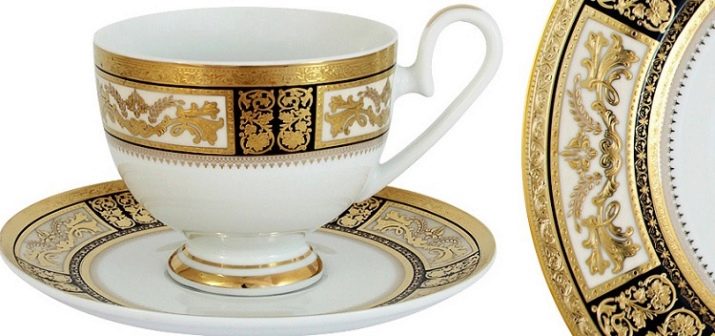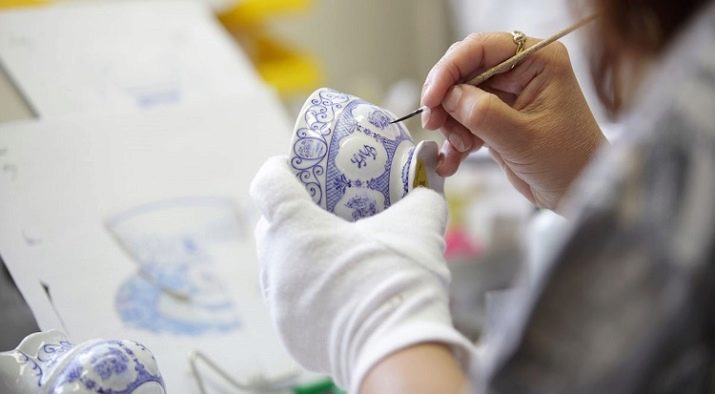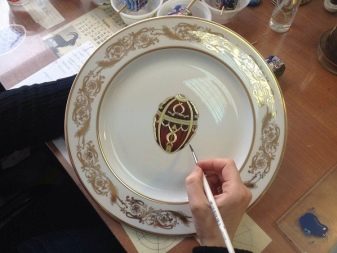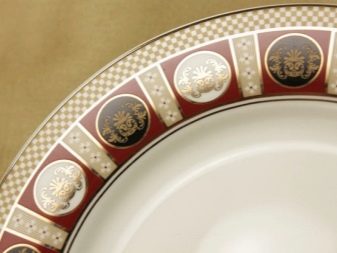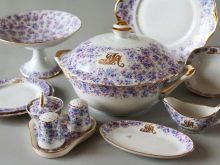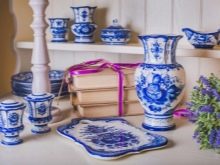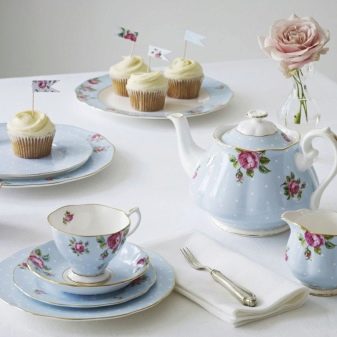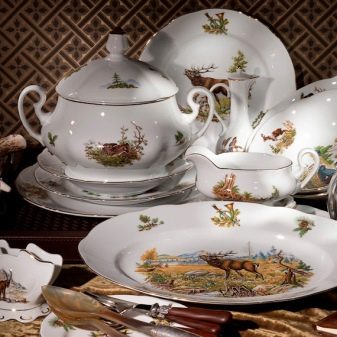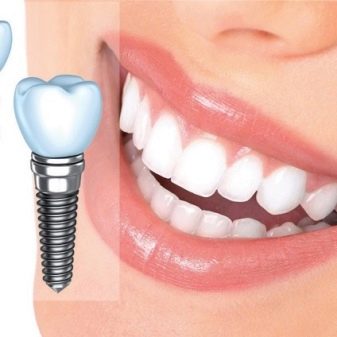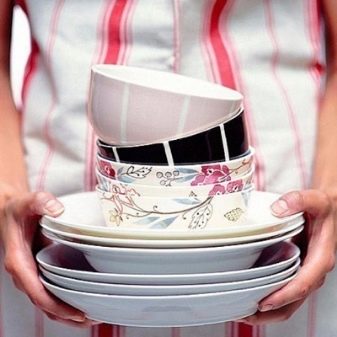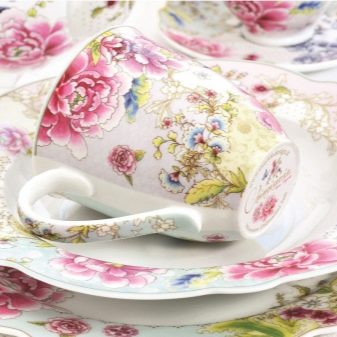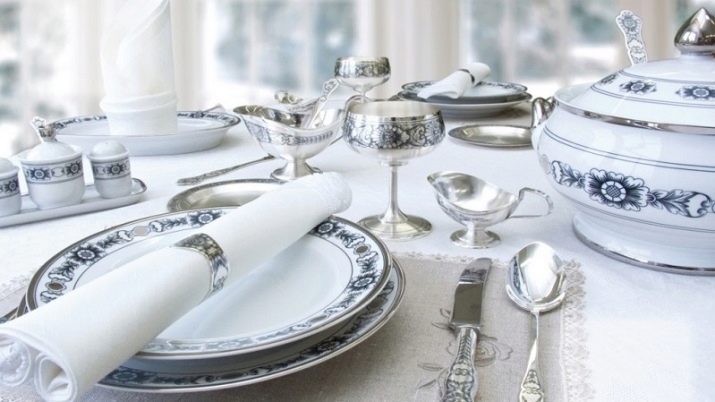Porcelain is a very ancient material, but today it is popular and in demand in many industries around the world.
What is porcelain?
This material is considered one of the varieties of ceramics. The products are made from such raw materials by high-temperature processing of white clay - kaolin, including additional ingredients, such as feldspar, quartz, burned bone. Roasting mass allows you to endow the finished product with water-repellent properties, attractive color - white or cream. In addition, porcelain becomes non-porous, and the characteristic ringing becomes inherent in the material for the production of dishes and decorative items.
Kaolin is pure clay, which is formed when feldspar is destroyed. Before processing, the Chinese stone is ground to a powdery state, after which the mixture is heat treated in the range from +1200 to +1500 degrees. As a result of roasting, the Chinese stone changes its consistency, fuses, forming non-porous glass. Kaolin stands out resistance to heat, so it retains its original shape. The process of creating porcelain is considered complete after combining these materials into one working mass.
A bit of history
Most sources indicate that China is the birthplace of china. The emergence of this raw material belongs to the period VI-VIII century n. er For many years, the formula and composition of this material were kept in secret, interesting decoration techniques, including “rice porcelain”, were born there. In Central Asia, porcelain products appeared around the 9th century; after 7 centuries, the technology for manufacturing unique raw materials became known to Japanese masters, and later porcelain production began in Europe.
The history of the creation of Russian porcelain dates back to the 18th century, but initially such material was similar to faience in its technical characteristics. The formation of porcelain production in Tsarist Russia had two directions: private manufactories functioned in those days, and production of goods from this raw material was established under the authority of the royal dynasty.
Among the most famous facilities that are still functioning are the Imperial Porcelain Factorywhere small items were originally made, such as tea sets, snuff boxes and buttons for the empress. With the advent of Soviet power, private manufactories were nationalized, many manufacturing techniques were lost.
In the 1930s, thanks to the efforts of the masters, some basics concerning the invention of high-quality raw materials were restored, and the artistic aspect concerning the painting of porcelain products also began to improve.
As for the European trend in the history of porcelain, the first masters trying to create this material were the Italians. Also in this case, tried to succeed the British, French and Germans. However, to achieve such a result, like the Chinese, they managed far from immediately.
The first samples of European porcelain rather resembled glass.A real breakthrough in this direction was made in Germany, where the young alchemist Bettger and the physicist Walter von Chirnhaus discovered large deposits of white clay, which radically differed from the rest of the minerals by its plasticity.
A workshop for the production of raw materials was opened in 1710, but the material was invented much later, after long and hard work, which later culminated in international recognition of Meissen porcelain.
Advantages and disadvantages
Today, porcelain is made a lot of products with different purposes. In each case, the composition of the material may vary, in light of which certain features of the raw materials come to the fore. In general, the following positive qualities of porcelain should be highlighted:
- raw material is completely impermeable to moisture;
- the material has no voids in its composition, which is considered a big plus in terms of hygienic porcelain products;
- porcelain dishes resistant to chemicals, in particular, to acids;
- in spite of the fact that porcelain products are mostly thin, the material is distinguished by resistance to mechanical damage;
- souvenirs, as well as sets and other utensils are capable of transmitting light, which gives them a special elegance and airiness;
- products from high-quality raw materials stand out for their noble color without a gray sheen;
- the surface of porcelain will be perfectly smooth;
- Most decorative products can be used in everyday life for food, which makes it universal.
Not devoid of material and products from it some minuses:
- most porcelain products require special care and storage;
- As a rule, high-quality products stand out for their high cost;
- dishes and souvenirs can not withstand sudden changes in temperature.
Types and their properties
Today there are several varieties of this raw material, which differ in quality properties, as well as technological nuances relating to production.
Solid
This type is also called natural. Modern manufacturers make it using a different number of main components - kaolin and Chinese stone. The first ingredient plays a major role in endowing raw materials with such an indicator as strength, but at the same time it is rather unstable to mechanical damage, therefore it is easily beaten. A solid variety usually has a considerable weight, such porcelain will not be transparent, and its surface may contain microscopic pores.
Get the material due to the high-temperature heating components, as a rule, to obtain raw materials, the mass is heated on average to 1500 degrees, The firing process takes place in several stages. Initially, solid porcelain will be gray or white-blue, with subsequent processing, the hue of the raw material changes to a more noble one. The components of solid porcelain are not distinguished by high cost.
As practice shows, such a variety is largely inferior in quality to bone china, but products from the solid species will be several times more affordable.
Soft
The second type is called vice versa - artificial porcelain. This is due to the fact that the soft appearance was first obtained in Europe when trying to replicate the skills of Chinese masters who made solid material. A feature of the process of making soft porcelain is roasting, but when exposed to a mass of not such critical temperatures, in light of which the raw material is not completely sintered, but remains porous. Among the notable features is to highlight the more attractive color of the material, which will be closer to the cream.
Another variation is considered bone and cold china. The first type, in addition to the main components, additionally consists of burned-out bone mass, it is durable, stands out for its transparency and whiteness.
This material also involves the use of a specific technology of firing feldspar mass with a pre-treated bone component, from which the adhesive component is removed. It is this porcelain that is called thin, since its products are distinguished by thin walls.
Argentine masters were engaged in obtaining cold porcelain, who used glue, glycerin, oils, and also corn starch as ingredients. The mass is similar in consistency with clay, freezes after the end of the mechanical action. Raw materials are very plastic, and therefore used for the manufacture of thin and filigree products. The material is sold in finished form.
Variants of painting
Modern manufacturers of porcelain products in practice apply several options for painting:
- over glaze;
- underglaze;
- intraglaze
The essence of the overglaze design lies in the application of coloring compositions on the surface of the object, burnt and coated with special glaze. From other coloring compositions, the substances used differ by the presence of a liquid component, which is able to reduce the temperature.
Underglaze painting is done before applying the glazing composition. Since in the future such a product will be exposed to temperatures, the color assortment of substances used in this case stands out with a minimum assortment. Most often, chrome or cobalt oxide is used for the patterns.
The material with intra-glazed painting lends itself to heat treatment, which is + 1200С-1300 degrees. During such exposure, the applied coloring composition eats into the glazed layer, which has a positive effect on the preservation and brightness of the colors, even with their subsequent contact with acidic media or alcohols.
In this case, color solutions range from muted colors in gold, pink or gray to rich color ornaments on the products.
Manufacturers Overview
Today we can identify the main manufacturers of porcelain products:
- Kuznetsov porcelain - a small company specializing in the manufacture of dishes and souvenirs;
- Center for the revival of traditional crafts "Fabled" - a company engaged in the manufacture of souvenirs, artistic porcelain, as well as building and architectural ceramics products;
- Gzhel Porcelain Factory - a large enterprise that produces and sells hand-painted products;
- PC "Dulevsky Porcelain" - manufacturer of products for interior decoration, as well as products of folk arts and crafts;
- Sagradelos - Spanish factory for the production of ceramics;
- Pickman - European manufacturer of china;
- English trademarks Royal Doulton and Wedgwood.
How to distinguish from fakes?
In order not to be mistaken with the choice of products from porcelain, you should adhere to the following rules.
- High-quality ceramics should be thin, but durable. From that, how much raw material will be thin, its cost depends. Therefore, in the price of the product, through which you can see how your hands shine through. This applies to dishes, as well as decorative products.
- Besides the fact that real porcelain will be transparent, it must also “sound” in a certain way. Usually, items are checked for fabrication with a wooden stick. The sound when it comes into contact with porcelain should be ringing and melodic, while the deaf will indicate that the product being tested is a fake.
- It is also important to pay attention to what color the material will have. Ideally, products from high-quality raw materials would be white or ivory, gray should alert the buyer.
- It is worth paying attention to how the product is made. Quality products everywhere will be perfectly smooth, dents and bumps will indicate poor quality of the products offered.
- Individual attention deserves a picture.Even hand-painted should be uniform and neat, however, it is allowed if brush strokes are visible on the surface.
- Also pay attention to the labeling of products and brands. Usually their manufacturer applies on the reverse side of the product. To give preference to well-known brands.
Application features
The purpose of the material is not only the production of dishes and products for interior decoration. Porcelain is used for the production of technical parts, as it has a low water absorption and hardness. This applies to a solid variety of raw materials. Soft porcelain is mostly applicable for the production of art products, dishes, etc. Also, raw materials are in demand in dental offices, in particular, for the production of dental crowns.
Porcelain serves as a material for the production of sinks, toilets and sinks, raw materials are in demand in microelectronics, in addition, some variants of armor are produced on the basis of porcelain.
Care rules
As for household products from this material, they require a special approach to the care and storage. To ceramic products retain their original appearance as long as possible, it is necessary to adhere to such recommendations.
- Washing of porcelain, especially antique items, should be done exclusively by hand. Hand-painted items can seriously suffer from hot water, as well as the use of abrasive sponges.
- Plates and other dishes can not be washed on the weight under running water. Usually, containers or objects are placed on the plastic surface in the sink. It is necessary to lay a soft towel on it, take water at room temperature, gently wash the porcelain.
- Ware with handles, you must hold the body, do not put pressure on thin or lace elements of the container.
- Caring for this porcelain is best carried out without the use of household chemicals. To remove strong pollution, use of baby soap or neutral chemistry is allowed. In some cases, you can add a little liquid ammonia to the water. Processing is allowed to perform hydrogen peroxide.
- Do not rub the porcelain surface with metal scrapers or sponges with a hard surface. It would be better to use a soft brush or cloth.
- Porcelain should not be completely immersed in water for a long time.
- Washed porcelain products must be wiped dry.
- Wash antique porcelain with water is not recommended, regular dust removal with a natural bristle brush will be sufficient for it.
Interesting Facts
During the Civil War, agitation slogans and symbolism were applied to dishes and decorative items made of porcelain instead of drawings and ornaments. This contributed to the increase in demand for ceramic products among all segments of the population. Also especially appreciated such products among collectors.
Despite the release of a large number of porcelain products that will be resistant to mechanical stress, and some dishes can even be used in microwave ovens and washed in dishwashers, most expensive are just antique items.
At auctions there are lots in violation of symmetry and cracks, which are estimated at millions of dollars.
In the next video you will find an excursion to the tea porcelain factory.
